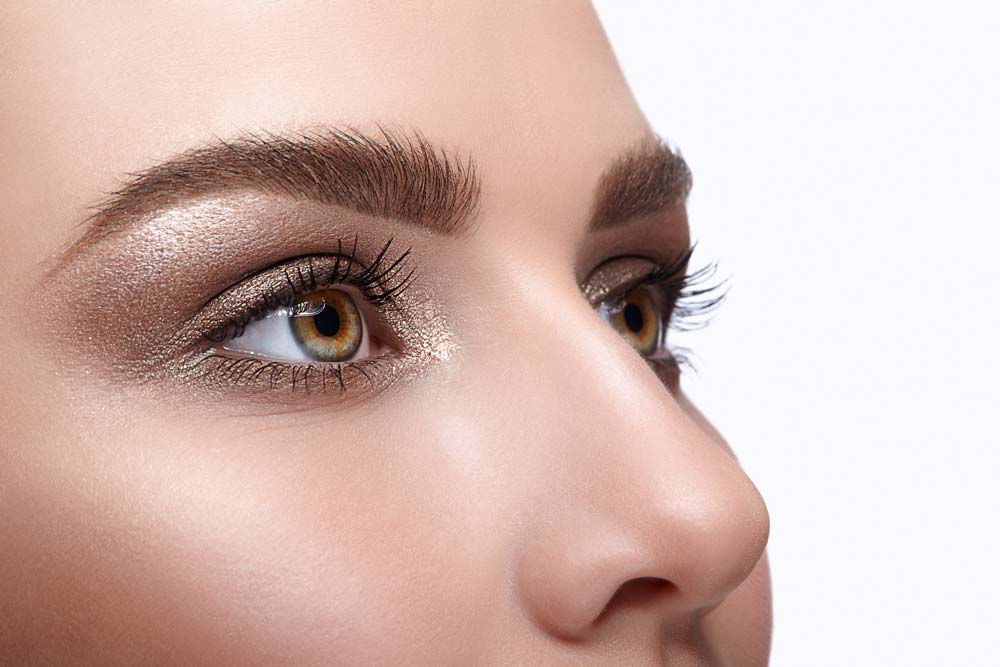Traditional rhinoplasty often involves breaking bones, either to remove a bony hump, or to thin the bony bridge, all of which is done using a chisel and hammer. Recently, a new technology has been incorporated into a rhinoplasty surgeon’s repertoire, which uses Piezo technology, or ultrasonic rhinoplasty as it is also known, for cutting, or shaving, bone. It has drastically decreased the need for breaking bones due to its precision when shaving and contouring, leaving the surrounding soft tissues, cartilage, fat, and skin unaffected. This not only ensures better results than the traditional method, but also means a shorter down time for patients, with almost no bruising and minimal swelling. Dr. Shahram is the first plastic surgeon to use this technology in rhinoplasty in the UAE and has extensive experience using it routinely since 2014.

This technique is used in open rhinoplasty for reshaping the nasal bones using a piezo ultrasonic devise.
Using this technique usually increases the operative time compared to traditional rhinoplasty, however the downtime is drastically shortened.
Like any bone surgery there is always a period of bone swelling involved, which tends to settle in 6 weeks.
Temporary bruising, swelling, numbness and tenderness of the skin, as well as a tight feeling and dry skin. For men, permanent need to shave behind ears, where beard-growing skin is repositioned.

Although this is a very safe device its fine vibrations cause heat, which is cooled by a continuous irrigation sterile saline system, and therefore it has the potential of burning the skin and soft tissues.
Recovery is faster and easier compared to traditional osteotomies. Due to the machine’s irrigation system, there is an initial swelling, with slight bruising, if at all, present.
The results of ultrasonic rhinoplasty are very natural, precise and delicate.

Ultrasonic rhinoplasty, also known as ultrasonic-assisted rhinoplasty or piezo rhinoplasty, is a surgical technique that uses a machine which its tip produces ultrasonic vibrations to assist in reshaping the nasal bones during a rhinoplasty procedure. It is a relatively newer approach in the field of rhinoplasty and has gained popularity due to its potential advantages over traditional techniques.
In traditional rhinoplasty, the surgeon typically uses a surgical chisel or osteotome to carefully break and reshape the nasal bones. However, these instruments can sometimes cause trauma to the surrounding tissues and result in postoperative bruising and swelling.
In ultrasonic rhinoplasty, a specialized device called a piezoelectric instrument is used. This instrument emits ultrasonic vibrations that selectively cut and sculpt bone while minimizing trauma to the surrounding soft tissues, blood vessels, and nerves. The ultrasonic energy is applied precisely to the desired areas, allowing for more controlled and precise bone reshaping.
Benefits of ultrasonic rhinoplasty may include:
Improved precision: The ultrasonic vibrations enable the surgeon to sculpt the nasal bones with greater accuracy and control, resulting in more precise and predictable outcomes. In many cases the bones can be carefully shaped instead of being broken.
Reduced trauma: The gentle nature of the ultrasonic energy can help minimize trauma to the soft tissues, blood vessels, and nerves, potentially leading to less bruising, swelling, and postoperative discomfort.
Enhanced safety: By targeting bone structures specifically, the risk of injury to other surrounding structures is reduced.
Preservation of nasal structures: Ultrasonic rhinoplasty allows for selective bone reshaping, which may help preserve delicate nasal structures such as the nasal septum and cartilage. It is possible to gently drill a hole in the bone which in some cases may be necessary to stabilize the septum.
Quicker recovery: The reduced trauma and tissue disruption associated with ultrasonic rhinoplasty may contribute to a faster recovery compared to traditional techniques.
Not all rhinoplasty cases require or are suitable for ultrasonic techniques. Dr. Shahram’s approach will depend on the individual's unique nasal anatomy and desired outcomes.
Yes, ultrasonic rhinoplasty and piezo rhinoplasty refer to the same surgical technique. The term "piezo" is derived from the word "piezoelectric," which refers to the specialized instrument used in this approach. Therefore, ultrasonic rhinoplasty, ultrasonic-assisted rhinoplasty, and piezo rhinoplasty are all different terms that describe the use of ultrasonic energy in reshaping the nasal bones during a rhinoplasty procedure.
Dr. Shahram Sajjadi takes a personalized approach by analyzing each patient’s unique facial structure and goals to create a custom Ultrasonic Rhinoplasty plan for optimal results.
Yes, Dr. Shahram Sajjadi ensures the highest safety standards during Ultrasonic Rhinoplasty procedures, utilizing state-of-the-art technology and meticulous surgical techniques.
Yes, Dr. Shahram Sajjadi can correct functional problems like breathing difficulties while enhancing the nose’s appearance with Ultrasonic Rhinoplasty.
Dr. Shahram Sajjadi’s unique approach lies in his precision, use of advanced ultrasonic tools, and commitment to achieving natural, harmonious results that complement the patient’s facial features.
During your consultation, Dr. Shahram Sajjadi will assess your nose structure, discuss your goals, and recommend the best approach to achieve natural, balanced results with Ultrasonic Rhinoplasty.
Complete the form below to arrange your consultation.
We respect your privacy. We never share your information with third parties.